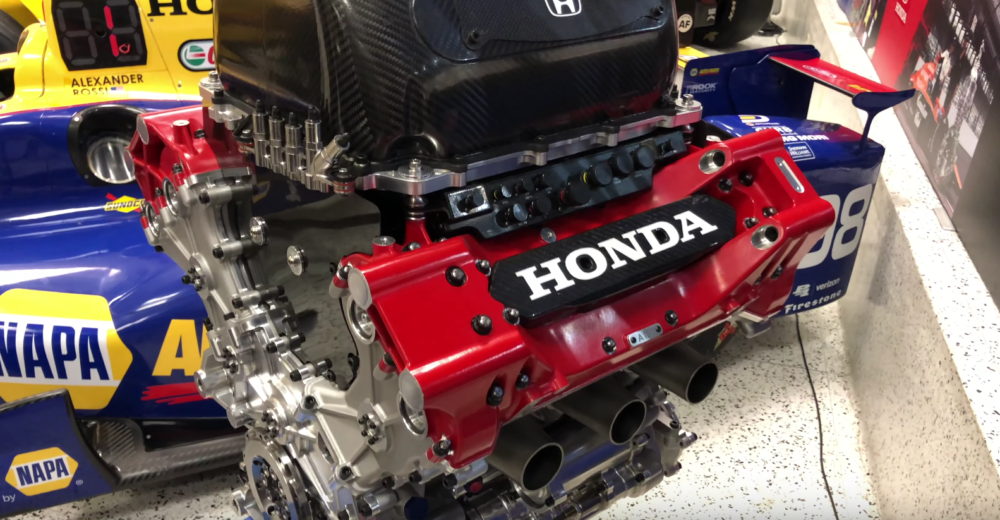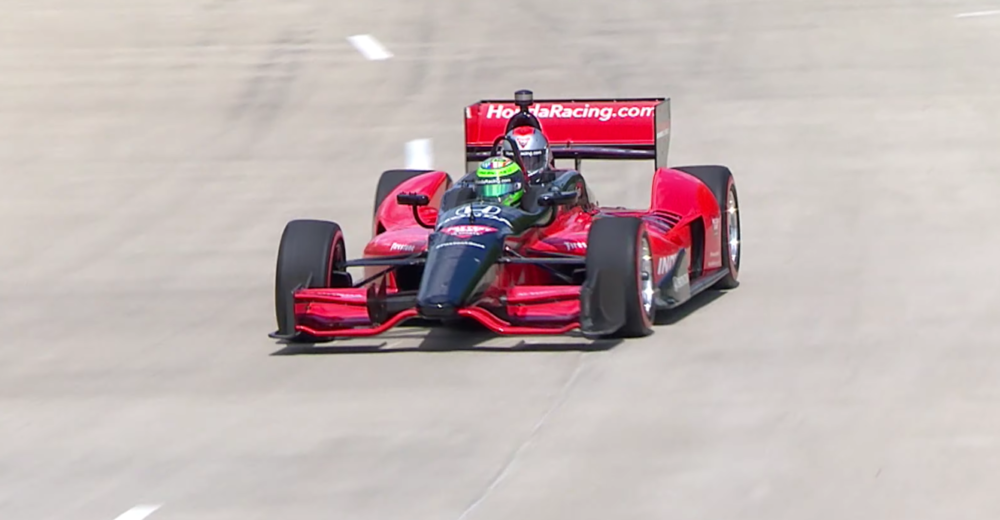How Honda Can Make 700 HP From Just 2.2 Liters of Displacement
What sets apart a Honda IndyCar V6 from Civic Type R K20C1?
Racing is usually the driving force that pushes automotive engineering to the limit. Crazy innovation is the name of the game and at the highest levels of the sport, you see it all the time. Most true race engines usually follow a certain recipe: high rpm, low displacement, high power. The Honda V6 powering their current season IndyCar is no different.
YouTube automotive engineering front man Engineering Explained, AKA Jason Fenske, let’s us know a few more details about what makes this engine go fast for laps on end in his latest video. Not only will will Jason let us know more about the IndyCar engine, but he will be doing a comparison with the the current Civic Type R turbo-four cylinder. Let’s check out some of those facts.

The engine featured in the Honda IndyCar is a 2.2L twin-turbo V6 making about 700 HP with a 12,000 RPM red line. As we know, the Civic Type R engine is a 2.0L turbo 4-cylinder making 306 HP with a 7,000 RPM red line. The most glaring difference that you find here between the two is the RPM numbers, with the IndyCar motor revving to a figure that usually is only found in motorcycles. This is achieved by having a very short stroke at 51.7mm and the max regulated IndyCar bore size of 95mm, allowing the piston speed to also drop and, as a result, rev high. However, interestingly, the piston speed of the K20C1 is also extremely close to the V6, regardless of its rpm or power output.

Another reason Honda uses this max bore size is to increase the size of the valves, allowing for better airflow to the engine. In IndyCar, cars power outputs are always regulated via boost. Thus, manufactures are free to use as much or as little fuel as they like, but always have a standard amount of boost. Jason then comes to clarify in the comments that the boost made by these engines is in the range of 4-9.5 psi, in comparison to the 24 stock psi in the K20C1.

How does the V6 make so much more power with less boost and only a bit more displacement? The key is fueling, which is via E85, a fuel known to have a substantially higher octane level that any commercially available gasoline. This allows for advanced timing, higher boost, and higher compression ratio. However, it must be noted that the IndyCar V6 only needs to survive 2,500 miles at most before replacement, while the K20C1 should be able to last 100,000 miles without issue.

However, if you asked us if we would rather have 100,000 miles in Civic Type R or 2,500 in a Honda IndyCar? We are taking the IndyCar every time.
